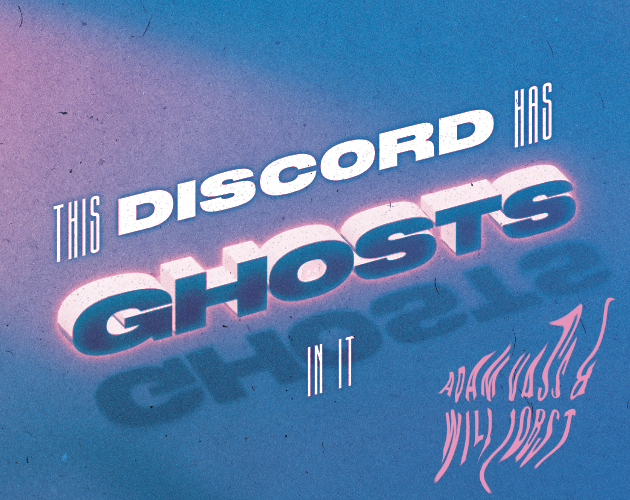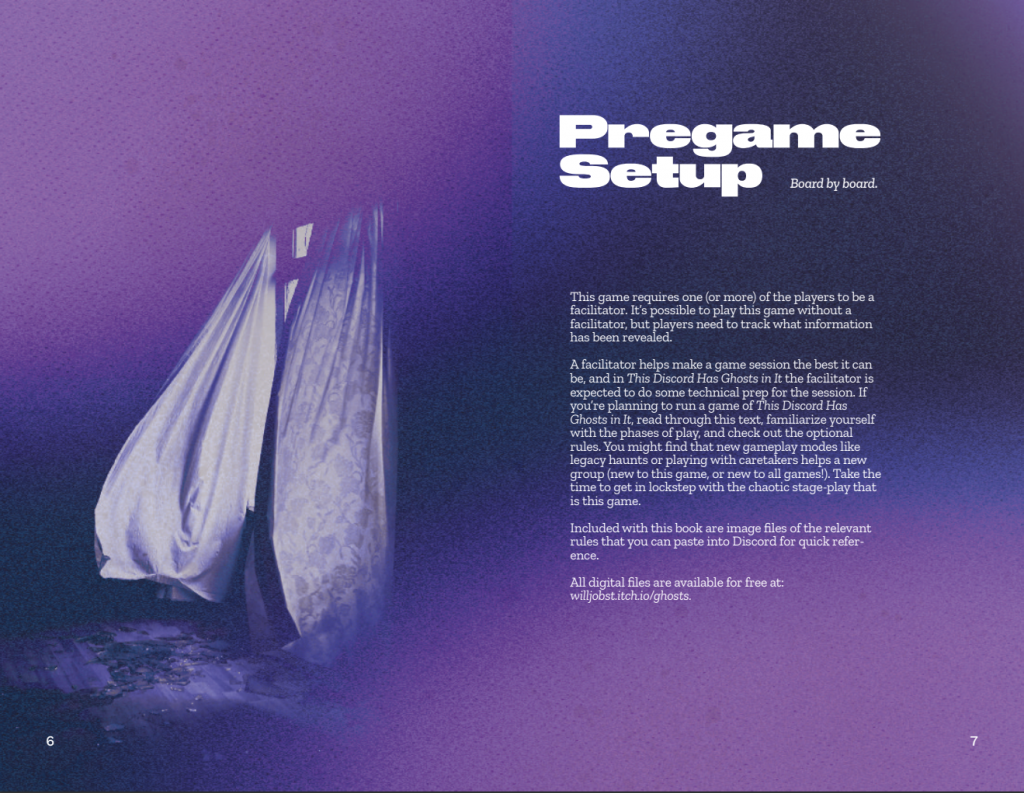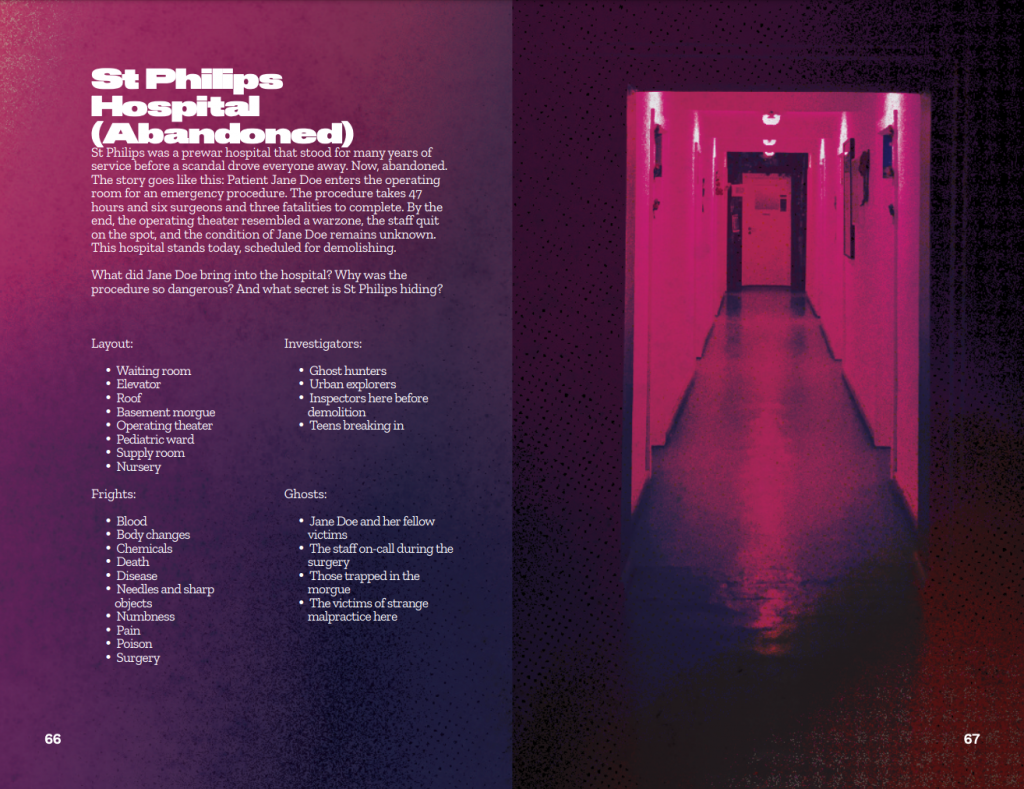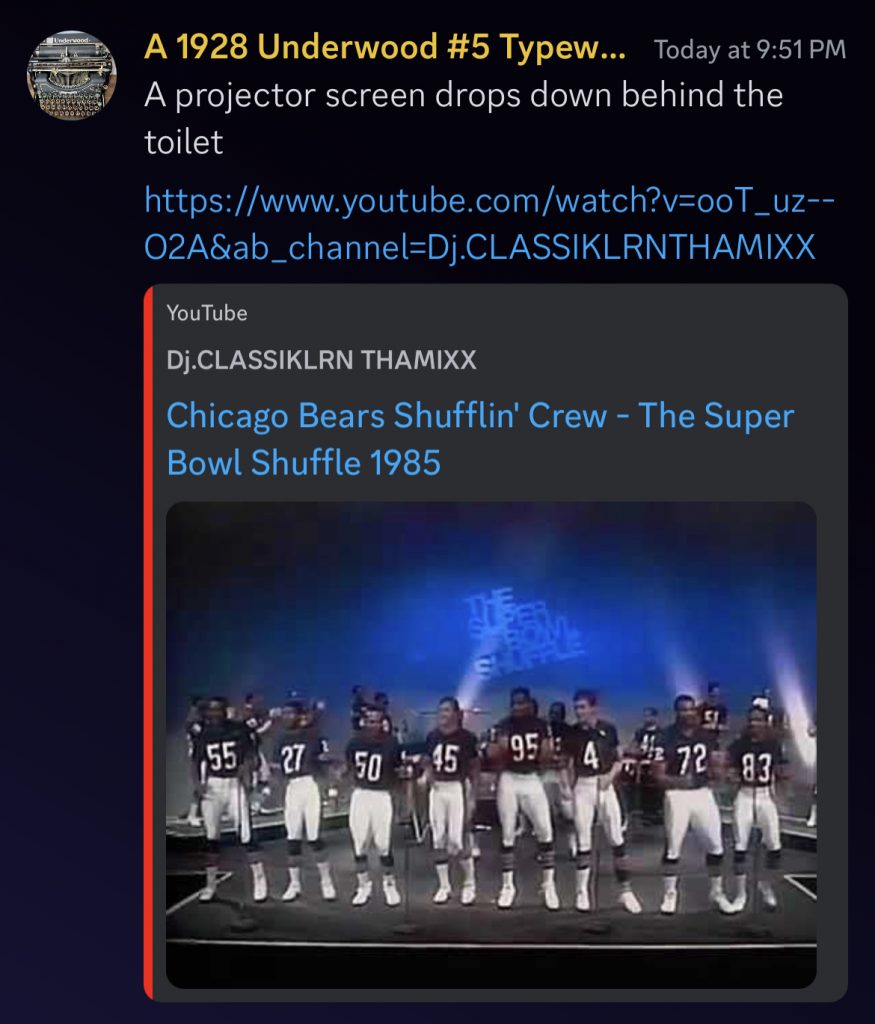I think it would be an extraordinarily safe bet to say that if I were to draw a Venn diagram of “Goonhammer readers” and “frequent Discord users”, I’d have almost a perfect circle.
Discord’s become the go-to online chatroom in recent years, exploding past it’s initial premise as a chat room app specifically for video games. For fans of tabletop RPG games, Discord’s toolset opened up unique opportunities that other chat room apps like Skype or Zoom couldn’t offer. It allowed Discord to find a niche in the TTRPG space as a way for friends across long distances to coordinate games and roll dice on virtual tabletops.
But what if there was a roleplaying game specifically designed around using Discord? Instead of making the app work for a game that’s supposed to be played in person around a table, you made a game that was written specifically with the use of Discord in mind?
The result is a game that would look a lot like “This Discord Has Ghosts in it”: a roleplaying game designed to turn a Discord server into a haunted house adventure ride, and the members of the server into either the ghosts that haunt the house with unfinished business or the investigators trying to learn its macabre secrets.

“This Discord has Ghosts in it” (TDHGII) is the work of indie RPG designers Adam Voss and Will Jobst. Initially launched for playtesting in 2019, the full release version was put up on itch.io in Spring 2023. With Ghoulhammer once again upon us, I decided it was the perfect time to try out this unique gaming experience to see if it can measure up to its premise.
The game has three roles, with some options for additional twists on those roles in the rulebook. The first role is the facilitator. If we keep with the haunted house analogy, the facilitator is less of a traditional game master and more like the ride owner and operator. The facilitator’s role is to build the discord that the players will be using for the game, as well as helping players along the haunted house and intervening when there’s problems in the experience.

To help any facilitator who may not be discord-savvy, the rulebook does an admirable job of guiding a facilitator through putting together the discord server and the appropriate permissions and channel settings to make the game work. Discord is constantly updating and adding new features, so some tools players could use that were added after the rules were published, like the soundboard, are a little unclear. Still, for a basic game I think most things here in the setup section will remain unchanged as long as you’re using Discord. Once the Discord server is created, you’ll have several channels for planning the game, and then different text channels to act as “rooms” in the house and a channel for some players to communicate with one another.
At this point, players that aren’t the facilitator need to decide on what sort of experience they want to have as a group, and set Lines and Veils. Lines and Veils are content they would like to see excluded from the game, which I applaud the inclusion of in the rules. Players also decide on frights, which are things that they want to see in the game to be used to create the haunts.
Next, players divide into two groups and join separate planning channels. Those two roles are the Ghosts and the Investigators.

If this is a haunted house ride, the Ghosts are the actors and attractions inside. The kids in makeup with a chainsaw that jump out at you to make you scream. The Ghosts all create backstories based on what the players agreed on earlier from the frights and game theme, and reasons why they are still bound to this plane. Then during the game, the Ghosts go into the various channels that act as rooms in the house and use text, video, photos, and audio messages to “haunt” the room. These haunts are based on the frights submitted by players at the beginning, and the Ghosts have the objective of finding out the two frights each investigator has, as well as helping the investigators learn their ghostly backstories.
Investigators are the folks walking through the haunted house and getting scared by the ride. The Investigator players create their characters with two frights from the fright list as well as a secret motive for exploring the house. Then using the “Walkie-Takies” voice channel, they roleplay exploring and interacting with the haunts the ghosts have laid out, becoming afraid by their deepest fears come to life, and learning about the ghosts that inhabit this place.

Once the frights are discovered and the ghostly backgrounds learned about by Investigators, everyone takes a little break before returning to perform seances on the spirits, to help resolve whatever still binds them to this plane and give the Ghosts the option of moving on. Then, investigators get one last comment as they leave the house, and ghosts make a parting observation.

The novelty of this concept is impressive, and easily the best selling point for the game. In order for this novel concept to really work though, “This Discord has Ghosts in it” requires all players to approach it at the game’s level and be very clear with what everyone wants before the game starts.
Turns out, the haunted house ride analogy I’ve been using isn’t just because it’s a good reference point for how the game works. It’s actually a load-bearing pillar of the game’s design and gameplay flow.
“This discord has Ghosts in it” says very early on in it’s ruleset that it’s a game of “collaborative storytelling”, where you are working together to make a good ghost story. This is a little misleading, as most TTRPGs are on some level games of collaborative storytelling. Even when players are in opposition to each other or the GM, a good group of folks at a table won’t actively stomp on anyone’s fun, and the twists and turns from dice rolls and off-the-cuff improvisation creates the freeform collaborative storytelling that makes tabletop roleplaying games so timelessly compelling.
From the session of the game I ran with some friends, we found out that this sort of flexible storytelling associated with most TTRPGs just doesn’t work for “This Discord has Ghosts in it”. Just like any haunted house ride you go to with your friends during the Halloween season, the moment you try to interact with the actors or attractions inside the ride in ways that aren’t intended the illusion falls apart.
Firstly, the importance of everyone on the same page can’t be understated. In my game, I had thought we were all on the same page when our group decided on a goofier theme for the haunt, picked the lines, veils, frights, and finally picked a haunted streamer house we called “Moon Labs” for the setting of our adventure.

This wasn’t enough collaboration in retrospect, which is our fault. To run this game properly we needed to decide exactly why the investigators were there before the teams split up, exactly how goofy we wanted it, and precisely what everyone wanted out of the game. The intended experience of “This Discord has Ghosts in it” lacks the flexibility to leave anything up to player improvisation because of the asynchronous communication between Ghost players and Investigator players.
Once the game gets started, Ghosts suffer from having a major communication problem compared to the Investigators. Ghost players hang out in walkie talkies to hear the investigators interact with the rooms they set up, but cannot talk. So any communication ghosts have to react to the investigator’s roleplaying is going to happen at a much slower pace, and haunts with elaborate planning might get thrown out the window if an investigator interacts with a haunt in an unintended way, another ghost interferes, or an investigator just leaves the room or misses the point. For Ghost players, the best way to haunt a room is to essentially have the entire thing completed the moment an Investigator tries to interact with it.
Additionally, Investigators need to collectively understand they are on the ride the Ghosts are taking them on, and that their job here is to interact with that ride as intended. Our Investigator group was a team of four idiots all on a convoluted adventure to find a place for Joe’s Investigator to take a piss, and Moon Labs happened to look mighty pissable that evening. So, when the Investigators explored the house initially, they weren’t focused as much on finding paranormal activity as they were finding some plumbing activity in the house.
It’s a very silly example to use, but it did show the problem that our investigators lost interest immediately in some haunts because they were concerned with their own stories rather than being chiefly concerned with exploring the haunted rooms of the house. Your investigator team can’t be concerned with piss, they’re here only for the ride.
Just like any haunted house ride that pops up this time of year, when haunts work as intended, it’s a great experience. Condit, for example, was roleplaying as a ghost of a former member of the 1985 Chicago Bears, his wayward spirit possessing a typewriter in the home’s basement. He had bankrolled the streamers in life as a celebrity donor, but is stuck on this plane because he still doesn’t understand just what the hell streaming even is. Through sheer determination to be zealously committed to the bit, and clever roleplay and use of the frights laid out before the game, Condit managed to not once, but twice create a haunting that included Investigators being forced to watch the Super Bowl Shuffle, gripped in terror the whole time. It was an all timer gag that had everyone in stitches.

Other Ghosts had their best laid plans of mice and ghosts go wildly awry. My good friend Soto joined us for the session and had created a ghost who had been a stalker of the streamer in life, but drowned in the hot tub outside trying to break into the house. Much of Soto’s plan for his haunts and revealing his backstory involved investigators exploring either the balcony or the hot tub, which the investigators didn’t really do. Soto was able to get some momentum by possessing a computer and having a digital chat with Andrew (noted Hero of the Imperium), which convinced Andrew to come outside and investigate the hot tub. Finally, after patiently waiting for his time, Soto could finally unveil the story he had crafted for Billy the Stalker.
Then along came Rocco.

Rocco, who was the ghost of the obnoxious streamer who used to live in the house, had created a haunt upstairs in the master bedroom involving the waterbed mattress blasting out music. The Investigators decided the best way to deal with this haunt was to push the mattress out of the window and into the hot tub, just as Andrew was pulling out a skeletal hand holding a wallet. By the sacred rule of “Yes, and…”, Soto’s dramatic reveal was at risk.

Recovering the scene as it almost flies off the rails, Andrew refocuses and opens the wallet to find a faded drivers license. Soto intended this to be Billy’s ID, to confirm that this is Billy’s skeleton and he must have died drowning in the hot tub. Rocco didn’t know this though, and decided it was going to be the faded ID of his character, who was named John Driscoll. Unfortunately for all involved, Rocco typed faster than Soto, and now not only to the Investigators have an ID that says “J_h_ D___ill”, the Investigators don’t even know this ID is linked to Rocco because Rocco hadn’t revealed his name previously. So Investigators had no idea who this wallet belonged to, and because Mountain Goats superfan Norman was one of the other Ghosts and spelling is hard, the investigators concluded that this is somehow the ID of Mountain Goats singer and known Magic the Gathering lover John Darinelle. Poor Soto is only able to get the game back on track by retconning the ID wholesale to say Billy during the final seance scene.

Finally, it’s hard to think of a situation where “This Discord has Ghosts in it” would ever actually make for an actually frightening experience. Horror in a TTRPG has traditionally been a tough line to walk, but not impossible. Games that can create great horror at the table do so by capitalizing on disempowerment in the face of the unknown to create real tension for the players. “This Discord has Ghosts in it”, even when taken on its own level, lacks any disempowerment for its players or any real tension to speak of. No one’s characters are ever in any real danger, just like you aren’t in any real danger on a haunted house ride. You’re not playing for the scares, you’re playing for the scary vibe.
“This Discord has Ghosts in it” is brimming with potential in its concept of how it uses discord to create an experience for a group. Its biggest issue is that you cannot approach the game like a traditional roleplaying game, this is explicitly a haunted house ride that you and your friends are building together in the discord server, then letting the ride operator strap you in to enjoy the attraction exactly as it was scripted to be enjoyed.
If this haunted house ride with your friends on Discord sounds like a good time, then pick up “This Discord has Ghosts in it” on itch.io. I do think there’s fun to be had breaking this game out during Halloween time with some discord pals and real merit to the concept here. Just remember that if you break the ride restraints and try to see what’s behind the curtain, you’ll be frustrated to find the ghosts in this haunted house are just puppets.
Have any questions or feedback? Drop us a note in the comments below or email us at contact@goonhammer.com.


